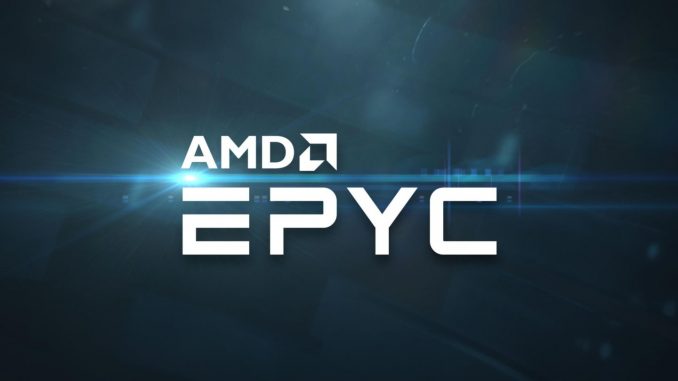
AMD seems to be about to launch a new generation of Epyc 2 called Rome. There are already several benchmark entries for the 64-core top model processor.
Epyc 2 to start soon
Along with Ryzen, Epyc is probably one of the most important products in Zen architecture. With the Epyc processors, AMD introduced the first server processors after Opteron a good two years ago. Through the multi-chip approach and Zen architecture, the company was once again able to compete in the server market, which is normally dominated by Intel’s Xeon CPUs. While at first Intel smiled at Epyc and denigrated the processors as “glued together desktop CPUs”, success quickly set in. Although AMD was only able to steal a small percentage share of the server CPU market from its competitor, this is also considered a success.
And the multi-chip approach has also become established. Intel is already planning its own processor with 48 cores, which consists of two dies and is called Cascade Lake-AP. The company’s goal is to compete against AMD’s Epyc 2 processors, which AMD CEO Lisa Su presented at last year’s Next Horizon event. They come not only with 7nm structure width, but also with a completely new approach. There is now a management chip that manages memory and ports. Up to eight smaller 7nm dies with the actual processor cores are connected to it. Thus Epyc 2 has up to 64 cores. The new structure is intended to offer advantages over its predecessors, especially in terms of memory latencies. The processors are to be launched together with Ryzen 3000 in the middle of the year. This is now confirmed by the first benchmark entries, which also reveal the clock speeds and the cache.
Up to 2.2 GHz boost clock on 64 cores
It won’t be long before Epyc 2 with the code name Rome is available on the market. Especially the high number of benchmarks in the SiSoftware Sandra database shows that there are already some samples in circulation at OEMs and other companies. These are qualification samples that are already very close to the final product. Accordingly, there should be no more major changes.
The benchmark entries show not only the number of cores and threads but also the clock rates. The 64-core with the product code ZS1406E2VJUG5_22/14_N comes with a standard clock rate of 1.4 GHz, while the boost clock rate is 2.2 GHz. This can also be seen in the product codes “1406” and “22/14”. This sounds like little, but with 64 cores the waste heat is also very high, which makes even higher clock rates difficult. The software also reads the cache. Thus, 512 kilobytes of L2 cache and 256 megabytes of L3 cache are used per core.
How well the Epyc 2 processors then perform must first be demonstrated by independent benchmarks. The benchmark results that have emerged do not yet say much. For example, the processor is defeated by a comparable combination of two AMD Epyc 7601 processors, which also have a total of 64 cores and threads.

Be the first to comment